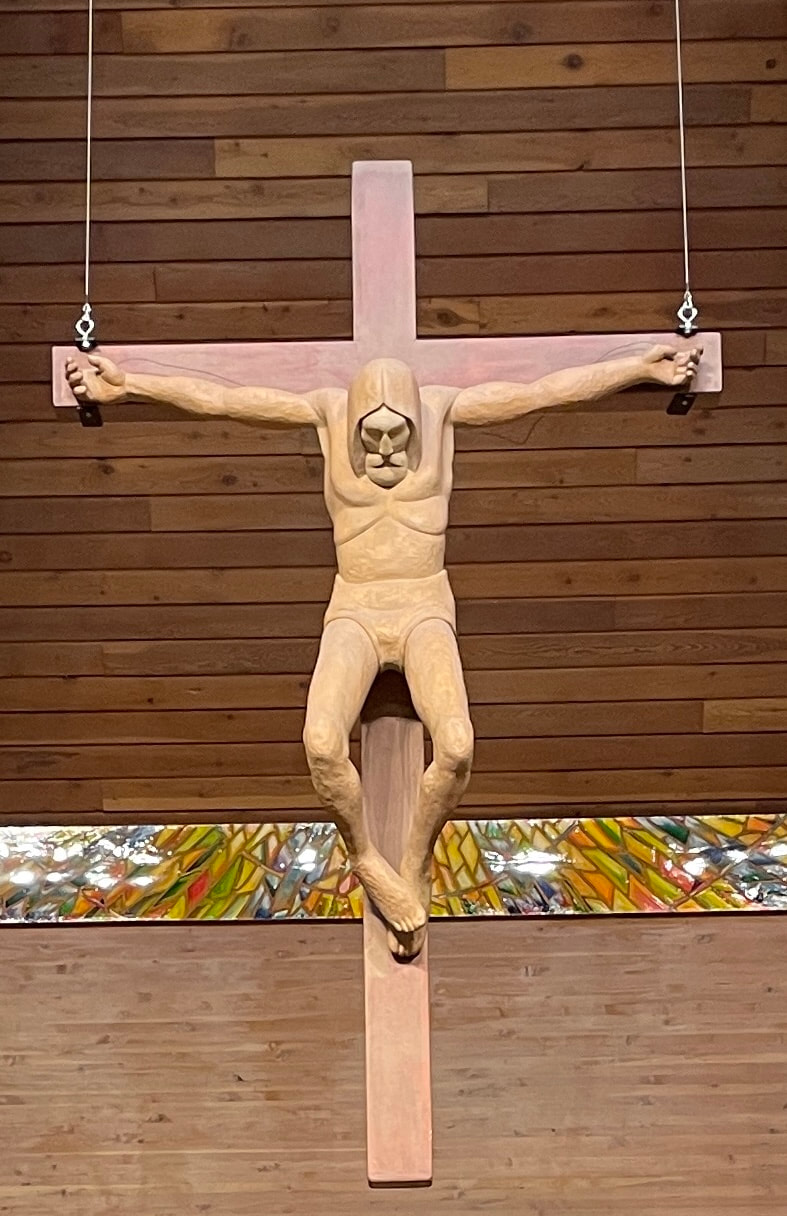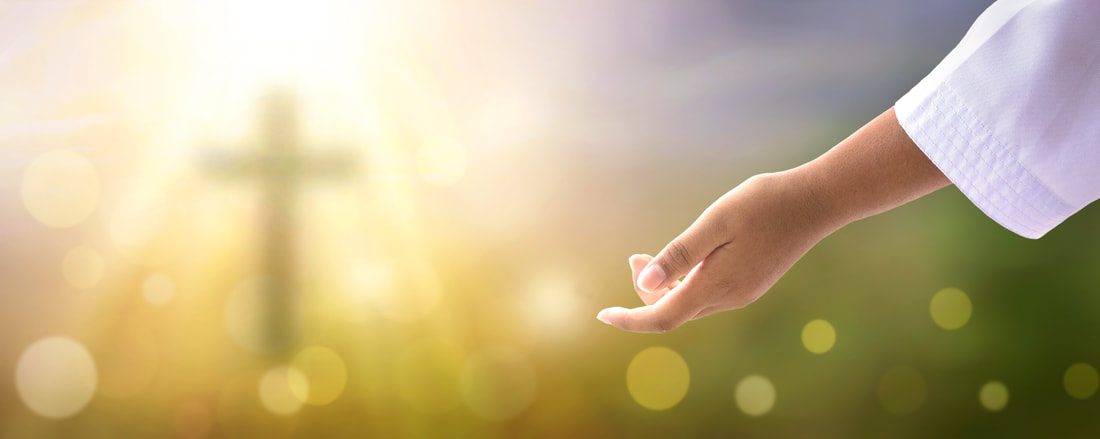|
The second Cross of Christ, the crucifix, for Tuesday of Holy Week 2024, is the New Adam Crucifix. This almost life-size crucifix hangs above the altar at a parish. Like every crucifix, the artist who designed and created it wanted to emphasize certain aspects about Jesus' death on the cross. Traditional versions of Jesus' crucifixion, like yesterday's Classroom Crucifix, emphasize Jesus' humanity, as well as the fact that His death took place in a particular way (on the cross), at a specific time in history (during the time of the Roman Empire). God really did become man and offer His life for our salvation, at a specific time and place in history. Had Jesus incarnated at a different time and place, His death would also likely have changed, and we would record it in some different way. The New Adam Crucifix also emphasizes Jesus' humanity, but with a very deliberate, theological twist. Not only does this crucifix portray Jesus as a human being, but His flesh looks like clay, instead of human skin. Genesis tells us "The LORD God formed the man out of the dust of the ground." (Gen 2:7) The clay of this Jesus is a reference to the original Adamic Covenant, when all of creation was still ordered, consistent, and most importantly, turned to the worship of God. At the time of the covenant with Adam, the entire cosmos, all that was created, was God's temple, His worship space. That changed with the sin of Adam and Eve. Jesus, who is the New Adam, does not break the covenant with God. Instead, His sacrifice begins the process of returning the created world back to the worship of God, which is why we use material elements in our sacraments. Because of the size of this crucifix, it absolutely dominates the worship space and creates a strong visual link between the re-presentation of the sacrifice that takes place on the altar during the Liturgy of the Eucharist and Jesus' historical sacrifice, around 33AD. We understand it is one and the same sacrifice, made available to us now, in 2024. Additionally, this crucifix was specially designed to hang in this particular church, and it coordinates with the architecture. The shape of this sanctuary is a large octagon, which is a pointed reference to the "Eighth Day." "The eighth day begins the new creation." (CCC349) The Catechism reminds us that "Creation was fashioned with a view to the sabbath [the 7th day], and therefore for the worship and adoration of God. Worship is inscribed in the order of creation. (CCC 347) In the beginning, all of creation was to turn to God in worship on the Seventh Day. It was written into the very order of the universe. After this original order was upset, Jesus' death and resurrection instituted the Eighth Day. "But for us a new day has dawned: the day of Christ's Resurrection. The seventh day completes the first creation. The eighth day begins the new creation. Thus, the work of creation culminates in the greater work of redemption. The first creation finds its meaning and its summit in the new creation in Christ, the splendor of which surpasses that of the first creation." (CCC349)
The New Adam crucifix reminds us to participate well in the sacrifice taking place during the Mass. It recalls the "new creation," the re-ordering and re-turning of all creation which has already begun and will eventually be completed at the end of time. In the meantime, let us focus on becoming a new creation ourselves, by dying to our old life so that we can rise to new life, the Eighth Day, in Christ on Easter Sunday. Let us pray: Holy Trinity, help us focus on becoming a new creation in You. Guide us to enter more fully into the Eighth Day, as we journey with Jesus to the cross on Calvary. And in all things, llet us praise You. Glory be to the Father, and to the Son, and to the Holy Spirit, as it was in the beginning, is now and ever shall be, world without end. Amen.
0 Comments
Leave a Reply. |
40 Crosses for
|



 RSS Feed
RSS Feed
